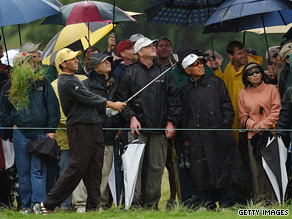
The U.S. Open has a reputation for testing the world’s best golfers with the most demanding courses.
The competition is designed to challenge, traditionally favoring courses that feature brutal rough and narrow fairways. This year’s U.S. Open is no exception, taking place at Bethpage Black in Long Island, New York, widely regarded as one of the toughest courses in the game. The U.S. Open was first staged at Bethpage in 2002, when it became the first municipal course to host the competition and, at 7,214 yards, the longest course in the competition’s history. Those who played at Bethpage 2002 still have the scars to prove it. Heavy rain and swirling wind turned the event into an endurance contest. It was survival of the fittest, with Tiger Woods the only competitor to finish under par, ending the tournament three under. Those brave enough to return to Bethpage on Thursday will find there have been a few changes. For starters, the course has been lengthened by 200 yards, which will make the grueling course even more exhausting. More welcome will be the introduction of “graduated” primary rough. That means there will be a strip of intermediate rough next to the fairway, and beyond that there a strip of primary rough approximately two-and-a-half to three inches deep, followed by a second cut of rough, which will be about four to six inches deep and stretch to the gallery rope lines. The idea is to penalize narrow misses less severely than big misses: a player who hits his shot slightly off target will land in the shorter cut of rough, an easier shot than the longer second cut. Mike Davis, senior director of rules and competitions for the United States Golf Association, has said the course will be structurally very similar to 2002, but there will be more “risk and reward” opportunities. That means there are more holes where golfers can choose to gamble from the tee. A well-executed drive will save strokes and a misplaced drive could cost them dear.
Don’t Miss
Mickelson cards 68
Daly Misses US Open
Late birdies gives Woods victory
The sheer length of the course is likely to favor the game’s big hitters. That includes the likes of Tiger Woods, the golfer who most successfully tamed Bethpage in 2002. Woods also showed his big-course credentials by winning last year’s U.S. Open at Torrey Pines, which topped Bethpage with its 7,643-yard course. The distance the golfers have to cover will probably favor those in good physical condition. But the size of Bethpage is not the only thing that will decide the contest. Graduated or not, the rough will be a real problem, making accurate driving a necessity. Phil Mickelson will go into the tournament as one of the favorites, but he will need to be precise from the tee, not one of his strong points. Patience will be a virtue. The fact that it is such a tough course means competitors will have to accept that they will not be able to get under par on many of the holes. On the other hand those new “risk and reward” holes will give gamblers the opportunity to throw caution to the wind if they are falling off the pace. The golfers and spectators will no doubt be hoping for better weather than in 2002, but even in glorious sunshine, it will still be the kind of tournament that separates the men from the boys. U.S. golfer John Daly failed to qualify for the U.S. Open last week, but he was full of praise for the course, saying “I love Bethpage. It’s the ultimate major course. It’s fair. It’s so hard they really can’t make it any harder.”